The former North Woolwich railway station next to the Thames in east London, and its goods yard are to become a housing development.
The station was on the old North London line, opening in 1847 as the terminus of the railway with a grand building for the station. However, as the area declined, the station building closed in 1979, to be replaced by a much smaller “shed” next door, while the grand building was turned into a railway museum. The arrival of the DLR extension close to the same railway killed off what little traffic it had and the station finally closed in December 2006.
The station though only makes up a small portion of the site, as there used to be a very large goods yard next to the station, benefiting from its placement right next to the river for deliveries.
The goods yard was reduced to just handling coal in January 1963, and by 1970 it was disused save as sidings for passenger trains. The goods yard closed in December 1970. It became overgrown and was totally empty until Crossrail took possession to use it as a construction site for the nearby North Woolwich portal.
They demolished the 1970s station as part of the clearance works.
Now that they have moved out, the site has been earmarked for a housing development.
The development will provide 348 homes, a new cafe and commercial space. Of the 348 homes being built, 127 will be affordable (85 social rent / 42 London Living Rent).
As a former railway site, the architects have proposed to use a ‘plum’ colour for the metalwork that references the historic colour of the North Eastern Railway (N.E.R) passenger carriages. Similarly, the font used on the carriages has also been used as inspiration for the signage throughout the scheme.
The grand old station building is still there but is now owned by a church. They also own the former railway track that will now run behind the new housing, and it’s a pity that couldn’t have been included with the new housing. While the railway can’t be built on, as the Elizabeth line tunnels run right underneath, it could have expanded the space for parkland in the area.
The cluster will be made up of five blocks of flats and will include two private gardens, and a public pocket park space which will also improve access through the site to the Woolwich Foot Tunnel.
Although most of the residents are likely to use the nearby DLR, the link to the Elizabeth line is only about 10 minutes walk via the foot tunnel. Unfortunately, the lifts in the tunnel are exceptionally unreliable, and Greenwich Council which looks after them is taking an inordinately long time to fix them.

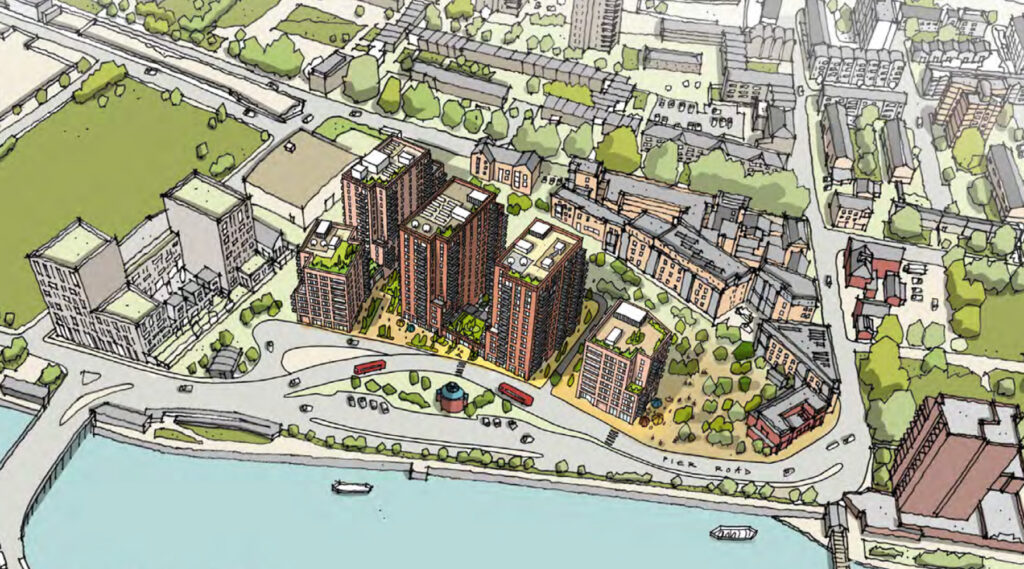
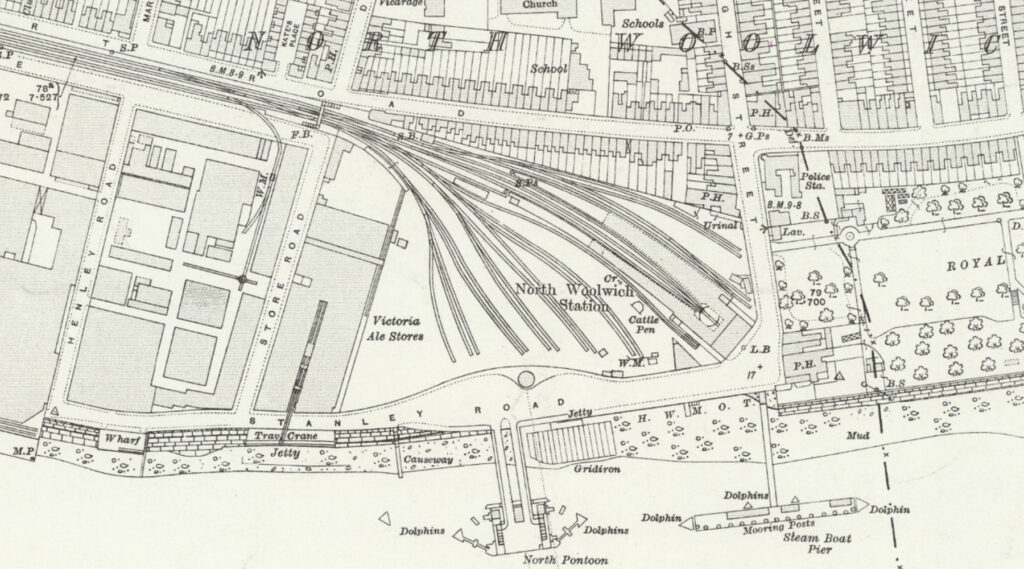
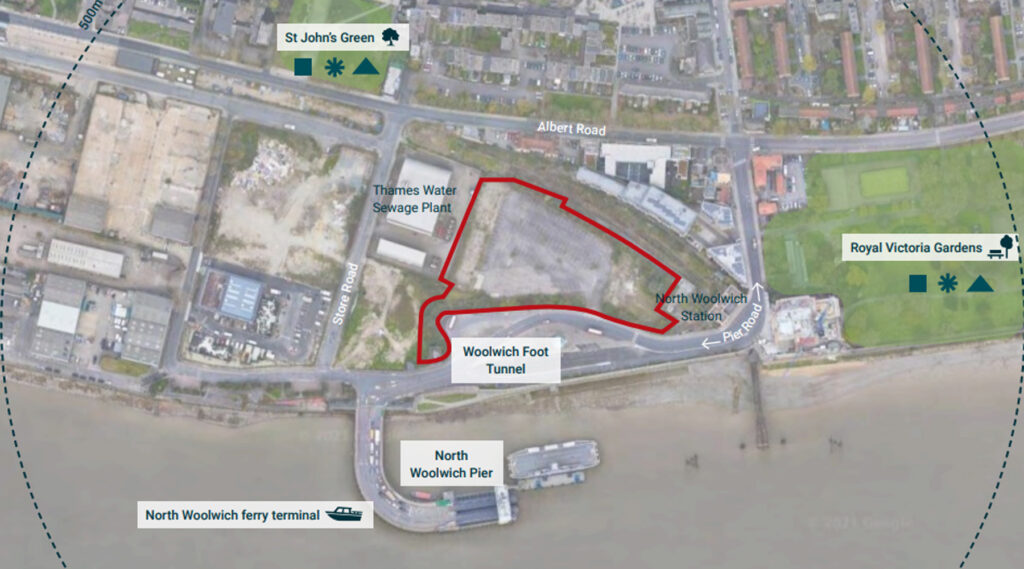
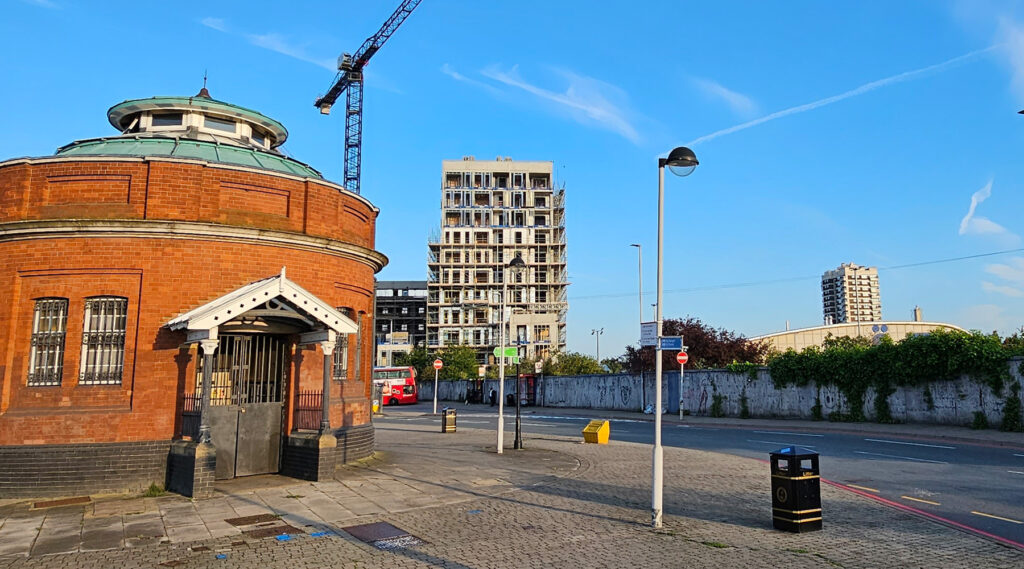
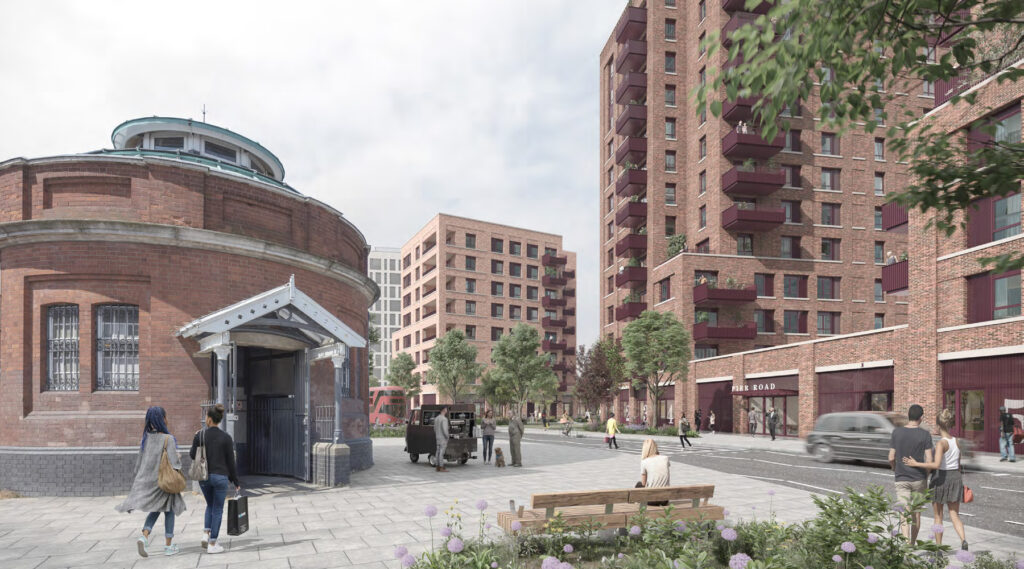






Funny to think that the place was so remote – back in the 1980s – from anywhere or anyone that it was used for a the BT Teleport satellite Earth station!
Still the DLR + North London line was a reliable if very slow way to get there.
I have fond memories of the railway museum, visiting it as a child from the ferry. I seem to recall there being a local library inside the museum too. Everything seems to be turning into flats these days…
Nothing wrong with turning an empty car park into flats.
I remember seeing the Flying Scotsman taking The Queen Mother to officially open North Woolwich Station Museum back in the 80’s. I watched the train from building rooftop at Tate & Lyle, Silvertown.
I used to drive trains to Woolwich firstly with BR then later with Silverlink in the 90,s
There was a lovely guy in the booking office called Joe who gladly made us a cup of tea before we commenced our return journey to Stratford and beyond.Nice little journey with the museum and old carriages alongside.Plus the train turntable.
The actual reason that North Woolwich Station had to close was for the DLR to pinch the line east of Stratford! (They were obsessed with linking everything to ‘Stratford International’.)
At the time the decision was made to chop that end of the line, there was as yet no DLR extension to have “killed off” its traffic.
I remember a romantic plan to turn the area behind the museum into a small heritage steam railway. Alas, I suspect that while we all enjoy a ride on a steam train the number of people willing to get into boiler suits and actually do something about it is limited and they were already fully occupied at Crossness.
1960s high rise all over again!
I love the way architects think that a ‘suitable railway colour scheme’ will sort out any other design problems. Pity they didn’t research the colours properly – North Eastern trains rarely got further south than Doncaster. Great Eastern Trains, however, did get to Woolwich. Perhaps they’d be better off with varnished teak as a finishing touch, the finish of the Great Eastern carriages, or “Stratford Blue” – the engine colour.